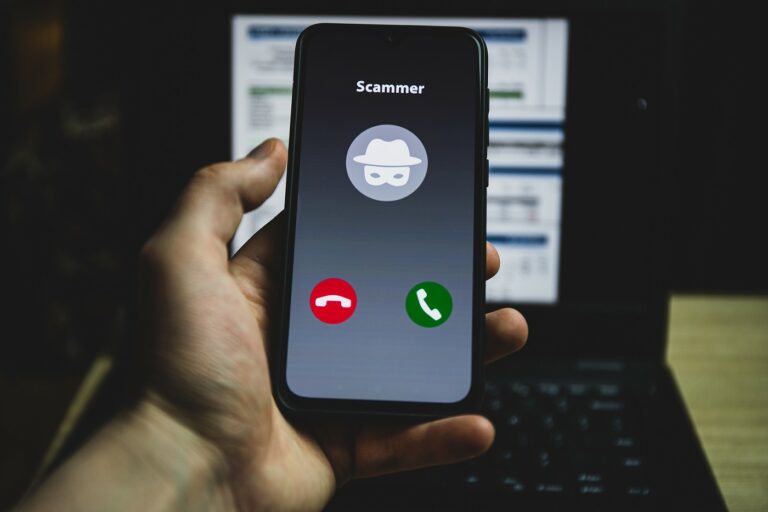And How To Fix That

The next time your phone rings or alerts, ask yourself — is that message coming from a robot or a human? Across phone calls, emails and (increasingly) text messages, most communications today are simply robots trying to get the attention of humans.
The Washington Post reports that about 50% of all phone calls are spam robo-calls. A significant proportion of the rest are predictive dialers (robots) placing 148 million calls per day, gathering human attention to feed the 511,000 telemarketers working in call centers.
Statista reports that 56% of emails sent are SPAM — just another word for computer servers (robots) trying to get a few seconds of humans’ attention. Can they get a brand, an offer, or a story into your attention? That’s how they win.

Text Messages and New Channels
Text messages are on the same downward path that email and phone have taken. Marketing via text-message grew 197% between 2015 and 2017. And 39% of businesses are now using text to engage their customers.
Robo-texts have reached a tipping point in this election season. Well over half the text messages I am receiving these days are robo-texts related to the 2020 elections. Will it stop after the election, or just shift to different topics?
Americans are shifting personal communications to other channels such as Messenger and WhatsApp. WhatsApp gives each customer an address where anyone can message them — and sending automated messages to WhatsApp numbers is now a huge part of Twilio’s business.
The lesson is clear — if you make up a new kind of contact information that’s publicly addressable, people will shift there to avoid the robots. And right after that, the robots will shift and take over.
If You Give Robots an API
So when did our phones and inboxes become an API for robots to connect to humans? Just as soon as the value of the human’s time exceeded the cost to operate the robot.
Anyone that accesses the “human API” gets to write to your memory. Read the subject line of a SPAM email and hit delete as fast as you can? That subject line was still written to your short-term memory. With enough repetition, their brand is in your long-term memory as well.
And just often enough — some human’s behavior is changed and they decide to buy or vote differently. Change the inputs stored in memory, and the outputs will change. It’s not a matter of choice.
No tech professional would set up an API where anonymous third parties get to write to your server’s memory and change its behavior. But that’s how contact information works. We protect our computer servers better than we protect our humans.
Once you understand how it works, it’s inevitable that an unsecure API with a valuable human on one end is going to be exploited until the human stops answering the phone, email, or text. It’s a variation on Gresham’s Law: bad communications drive out good ones until the network value is zero.

Properties of Contact Information
Contact information has several properties that enable exploitation. To fix contact information, we will need to change these properties.
1. One Address Goes to Many Recipients:
We give out one email address or phone number to many recipients. If one recipient SPAMS you, they know you’re still locked-into that email address or phone number because you’ve given it to many others.
2. My Contact Info is Stored in Everyone Else’s Database.
My contact info is not stored in 1 place where I have edit rights. It’s stored in 1000 places where I have no visibility or edit rights. I don’t know who has my contact info and can’t edit it in the places it is stored.
3. Messages Sent Without a Positive ID.
Any robot can send a message, because we don’t have a positive ID on the sender. Sender-blocking tools and reputation management tools don’t work because the robot can change the sending address with every message.
4. Recipient Addresses Can Be Transferred.
If I give my email address to one person or company, they put it on a list and sell it to someone else. Or a 3rd party can hack into their database and steal my contact info.
5. You Can’t Take It Back:
Once you give out your phone number or email address — you can’t take it back! They can use it as many times as they want, for as many reasons as they want. Companies routinely demand contact information to let a live human help you today, and then have a robot use that information to SPAM you for years afterward.

A New Kind of Contact Information
Let’s say I meet you at a conference. You want my contact information. I say, “point your phone camera at this QR code. It’s a link where you can call me, text me, email me or get on my calendar.” I could also email or text you the link (from a no-reply address, of course).
The link is a unique address for the conversation between me and you. That’s a different kind of address, and a different kind of contact information. It might look like this: http://ContactLink.com/2rfq984t3r
And it solves the problems:
1. One Address Per Recipient.
If I give my address to 10 different people, each person gets a different, unique web address. This address is nontransferable — nobody else can use it.
2. Positive ID Required to send Messages.
We get a positive ID on a human when you go to the website. Getting a positive ID means blocking and reputation-tracking systems can work over time, and robots are not allowed.
3. Change Access / Block at Any Time.
I can add or remove contact methods — such as taking away your ability to call me by phone. Or block you anytime. I’m only changing my conversation with you, and not affecting everyone else.
4. My Contact Info is Under My Control.
If I change my phone number, the new phone number is used when anyone visits their unique conversation page and clicks the “Call” button. I can update my information in one place, and it’s completely transparent to everyone who contacts me. They don’t even know it happened, since they never had my phone number anyway.
Reverse Compatibility
What about the websites and companies that demand a phone number and email address? How can we solve contact information if sometimes you have to give out your info to spammers?
To solve that problem, we need to have the reverse compatibility. Let’s imagine I have a new, “screened” phone number and email address. They look just like any other phone number and email address, but they go to a central web service instead of to my phone and inbox.
Any call, text or email that comes into these addresses is compared to a list of my “Unique Conversations”. If I have a conversation with you, and you’re allowed to call me, then your call gets forwarded to my real phone.
If not, it gets treated as a suspected robo-call. The same principle works for email — if I have a conversation set up with your email address, then your emails are added to the conversation and sent through to me.
It’s magic: The right calls and emails get through, and all the robots and sales calls get blocked. It’s like having a personal assistant.
Check Out What We’re Building
My team and I are building this kind of solution today. If you want to learn more or sign up as a Beta tester, check us out at https://ContactLink.com







